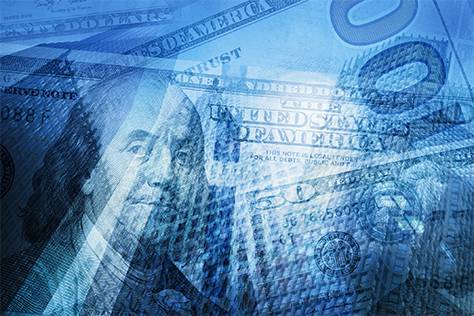The U.S. dollar climbed to its highest level against the Japanese yen in more than two weeks on Wednesday, following President Donald Trump’s pledge to issue further trade-related announcements after imposing 25% tariffs on Japan and other trading partners.
The dollar had already posted gains against major currencies on Tuesday, buoyed by Trump’s latest tariff threats, which are set to take effect on August 1. However, he later signaled openness to extending the deadline if countries submit proposals.
Trump wrote on social media that announcements concerning “at least seven countries” would be made on Wednesday regarding trade, without providing further details. He also threatened to impose a 50% tariff on copper imports and said he would soon implement long-delayed tariffs on semiconductors and pharmaceuticals.
Despite the recent strength, the U.S. dollar index – which tracks the greenback against a basket of six major currencies – remains more than 6% lower since Trump unveiled a wave of reciprocal tariffs on April 2 as part of what he called “Liberation Day.” Those tariffs initially triggered a broad market selloff before most were postponed to allow time for bilateral trade negotiations.
Ray Attrill, head of FX strategy at National Australia Bank, noted that “the market’s second take on the reciprocal tariff announcements was actually negative for the dollar, based on the belief that the damage could be just as severe – if not worse – for the U.S. as it is for other countries.”
He added that “markets are still hesitant to take decisive positions given the prevailing uncertainty.”
The dollar rose 0.1% to 146.75 yen after touching 147.19, marking a weekly gain of 1.5% so far – its largest against the yen since mid-December.
Japan, a major export-driven economy and key U.S. trading partner, remains far from reaching a deal. The yen has weakened significantly ahead of the tariff deadline as multiple rounds of negotiations have failed to yield progress. Japanese policymakers are increasingly focused on crucial upcoming elections.
Speculation that opposition parties might win seats in the upper house and push for greater fiscal stimulus has weighed on Japanese government bonds this week, driving a sharp rise in long-term yields.
U.S. Treasury Secretary Scott Bessent, one of Washington’s lead negotiators with Tokyo, is expected to attend Expo 2025 in Osaka later this month, which could open the door to further discussions.
IG analyst Tony Sycamore noted that “talks appear to be stalled over the issue of rice market protections in Japan, and it’s hard to imagine the Japanese backing down on this demand.”
“The dollar’s rise against the yen was also supported by a continued rally in U.S. bond yields for a fifth consecutive day, along with a sharp climb in Japanese yields due to fiscal concerns ahead of the July 20 election.”
The euro remained steady at $1.171, as markets awaited clarity on whether the European Union would receive a tariff notice from Washington. According to EU sources cited by Reuters, there is cautious optimism that the bloc could be granted exemptions from the standard 10% rate.
Investors are also looking ahead to the release of the Federal Reserve’s latest meeting minutes later today, which may offer clearer insights into the path of U.S. monetary policy.
Commerzbank analyst Antje Praefcke said the euro’s strength against the dollar was also tied to interest rate differentials. “Markets are currently pricing in nearly two rate cuts from the Fed by year-end, compared to just one from the European Central Bank,” she explained.
The dollar index was flat at 97.60, while the British pound edged higher to $1.36.
The New Zealand dollar rose 0.1% to $0.60, after the local central bank held its benchmark rate steady as expected and flagged near-term inflationary risks.


